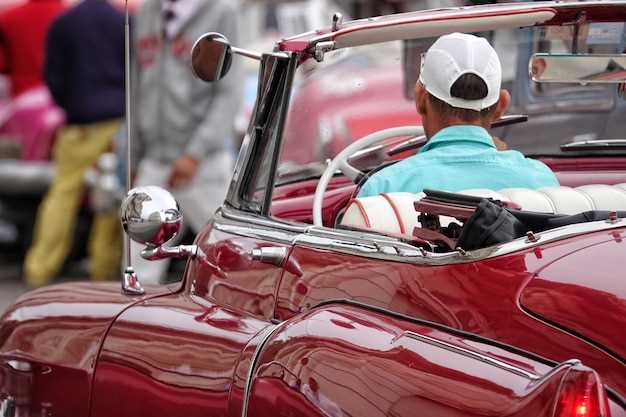
Classic car events are a celebration of automotive history, craftsmanship, and design. Judging plays a crucial role in these shows, as it not only determines the winners, but also reflects the dedication of collectors and restorers in preserving automotive heritage. Understanding the judging criteria is essential for participants and spectators alike, as it enhances appreciation for the effort behind each entry.
The judging process typically revolves around several key factors, including originality, condition, and presentation. Originality refers to how closely a vehicle adheres to its factory specifications, while condition evaluates the overall state of the car, including mechanical and aesthetic aspects. Presentation is equally important, as a well-displayed vehicle can significantly impact the judges’ perception during the show.
In addition to these fundamental criteria, specific categories may have their own unique standards. For instance, vintage vehicles may be judged on their historical significance, while custom builds might focus on creativity and execution. Understanding these nuances allows participants to align their preparations with the expectations of the judges, ultimately enhancing their chances of success at classic car events.
Evaluating Authenticity: Key Aspects of Classic Car Originals

When attending a classic car show, one of the most vital aspects to consider is the authenticity of the vehicles on display. Evaluating a classic car’s originality involves meticulous attention to detail, as many elements contribute to its historical value and overall integrity.
Firstly, reviewing the vehicle’s history is essential. Documentation such as original sales invoices, service records, and owner history can provide insight into the car’s provenance. These records affirm the authenticity of the car and can significantly enhance its appeal at a show.
Secondly, examining key components, including the engine, bodywork, and interior finishes, is crucial. Classic cars often exhibit unique features that define their era, such as particular styles of seats, dashboards, and engine configurations. Ensuring these elements conform to factory specifications is pivotal in assessing authenticity.
Thirdly, the paint and color schemes should match those used during the original production. Manufacturers often had specific color codes, and deviations from these can indicate alterations from the original design. Additionally, the presence of factory-applied decals or badges can further verify originality.
Moreover, discreet manufacturing features like VIN numbers and date codes on components offer significant clues regarding a vehicle’s authenticity. Collectors should verify that these elements match the corresponding records, as discrepancies may raise questions about the car’s originality.
Lastly, expert appraisals can serve as a valuable resource in determining the authenticity of a classic car. Knowledgeable judges at car shows can spot fakes or replicas and provide a professional evaluation based on established criteria, helping enthusiasts make informed decisions.
In conclusion, evaluating authenticity involves a comprehensive analysis of the vehicle’s history, components, and features. By focusing on these aspects, collectors and enthusiasts can ensure they appreciate and honor the true essence of classic car originals at events and shows.
Points System Breakdown: How Judges Assign Scores in Car Shows

In classic car events, judging criteria play a pivotal role in determining the winners. Each car is evaluated based on a comprehensive points system, which allows judges to assign scores systematically and objectively. Understanding this scoring mechanism can help owners optimize their vehicles for presentation.
The judging process typically focuses on several key categories, each allocated a specific number of points. These categories may include condition, authenticity, presentation, and performance. The total score is derived from the sum of points awarded across these areas, reflecting the overall excellence of the car.
Condition refers to the car’s physical state, including its paintwork, bodywork, and interior. Judges meticulously inspect for signs of wear and tear. Points are awarded for factors such as the quality of restoration, the presence of rust, and the functionality of components. A car in pristine condition can earn a significant advantage in this category.
Authenticity assesses whether the car maintains its original parts and specifications. Judges compare the vehicle against factory records and standards. Modifications that stray from the original design may lead to deductions in points. Classic cars that showcase their true heritage and craftsmanship are highly regarded.
Presentation encompasses the overall visual appeal of the car. This includes cleanliness, detailing, and the care taken in the vehicle’s display. An appealing presentation can captivate both judges and spectators alike, making it an essential area for owners to focus on before the event.
Performance is often considered in events where functionality is showcased. Judges may evaluate how well the car operates. Factors such as engine performance, handling, and braking efficiency can influence the score. A well-performing car can significantly enhance the overall points total attributed to it during evaluations.
In conclusion, the points system in classic car judging enables a fair and thorough assessment of each vehicle. By addressing key categories such as condition, authenticity, presentation, and performance, owners can better prepare their cars for successful evaluations.
Common Mistakes to Avoid: Ensuring Your Car Meets Judging Standards
Preparing your classic car for a judging show involves meticulous attention to detail. One of the most common mistakes is neglecting authenticity. Judges typically look for original parts and materials, so any modifications should be well-documented and historically appropriate. Ensure that your modifications do not detract from the car’s classic appeal.
Another frequent oversight is the car’s cleanliness. A dirty engine bay or dusty interior can tarnish the overall impression. Always ensure your car is thoroughly cleaned, both inside and out. This not only showcases the vehicle but also demonstrates care and attention from the owner.
Proper presentation is crucial. Ensure that all the exterior surfaces are polished, and any chrome details are shiny and free of rust. Judges evaluate the visual impact of the vehicle, so make sure it stands out for the right reasons. Utilize appropriate products for detailing to avoid causing any damage to the car.
Documentation is key during a judging event. Not having relevant paperwork, such as service records or restoration history, can lead to missed points. Always present clear and organized documentation that informs judges about the car’s provenance and any restoration work that has been completed.
Ignoring the judging criteria is another common mistake. Familiarize yourself with the specific rules and standards of each show, as these can vary significantly. Review the guidelines thoroughly to ensure that your car meets all requirements. Being aware of what judges prioritize can significantly influence your overall score.
Lastly, rushing the preparation process should be avoided. Take your time to ensure all aspects of the car meet high standards. Hurrying can lead to oversights that could easily be corrected with a bit more attention. Preparing well in advance will allow for a thorough inspection and necessary last-minute fixes.




